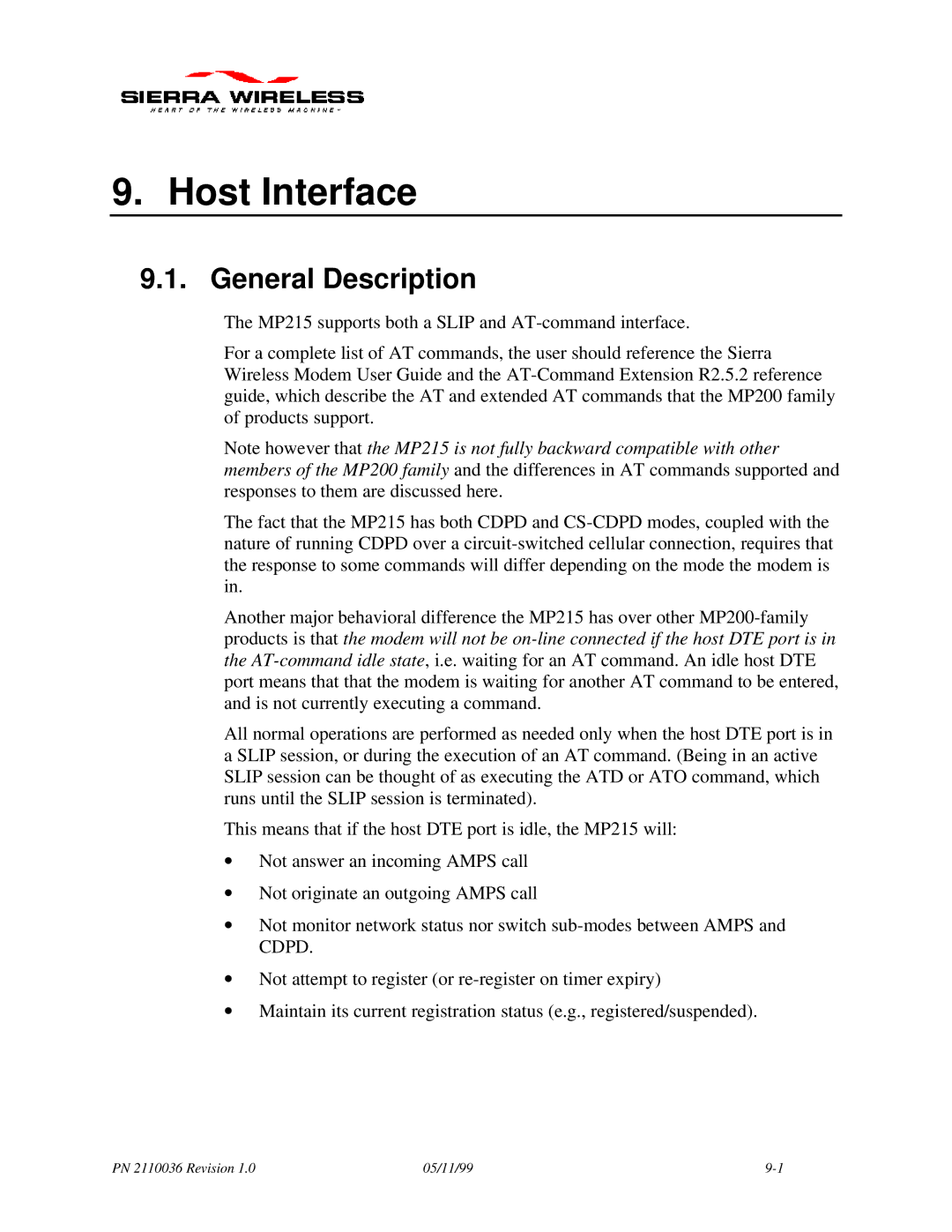
9. Host Interface
9.1. General Description
The MP215 supports both a SLIP and
For a complete list of AT commands, the user should reference the Sierra Wireless Modem User Guide and the
Note however that the MP215 is not fully backward compatible with other members of the MP200 family and the differences in AT commands supported and responses to them are discussed here.
The fact that the MP215 has both CDPD and
Another major behavioral difference the MP215 has over other
All normal operations are performed as needed only when the host DTE port is in a SLIP session, or during the execution of an AT command. (Being in an active SLIP session can be thought of as executing the ATD or ATO command, which runs until the SLIP session is terminated).
This means that if the host DTE port is idle, the MP215 will:
∙Not answer an incoming AMPS call
∙Not originate an outgoing AMPS call
∙Not monitor network status nor switch
∙Not attempt to register (or
∙Maintain its current registration status (e.g., registered/suspended).
PN 2110036 Revision 1.0 | 05/11/99 |
